
The common bulbul is a member of the bulbul family of passerine birds. It is found in north-eastern, northern, western and central Africa.

The blue-faced honeyeater, also colloquially known as the Bananabird, is a passerine bird of the honeyeater family, Meliphagidae. It is the only member of its genus, and it is most closely related to honeyeaters of the genus Melithreptus. Three subspecies are recognised. At around 29.5 cm (11.6 in) in length, the blue-faced species is large for a honeyeater. Its plumage is distinctive, with olive upperparts, white underparts, and a black head and throat with white nape and cheeks. Males and females are similar in external appearance. Adults have a blue area of bare skin on each side of the face readily distinguishing them from juveniles, which have yellow or green patches of bare skin.

The spotted pardalote is a small passerine bird native to eastern and southern Australia, at elevations of up to 2,000 metres (6,600 ft). It is part of the pardalote family, Pardalotidae. One of the smallest of all Australian birds at 8 to 10 centimetres in length, and one of the most colourful; it is sometimes known as the diamondbird. Although moderately common in all of the reasonably fertile parts of Australia it is seldom seen closely enough to enable identification.

The red-browed pardalote is a small brightly coloured insectivorous passerine, endemic to Australia. A gleaning specialist, they forage primarily in eucalypt trees . The Latin word rubricatus means 'red-ochred' which is descriptive of their orange-red eyebrow. Other common names include red-browed diamondbird, bellbird, cape red-browed, pale red-browed, fawn-eyed, fawn-eyebrowed and pallid or red-lored pardalote.

The scarlet robin is a common red-breasted Australasian robin in the passerine bird genus Petroica. The species is found on continental Australia and its offshore islands, including Tasmania. The species was originally split in 1999 by Schodde and Mason, and as the original collection by Gmelin was from Norfolk Island, this retained the name of multicolor, and is now known as the Norfolk robin.
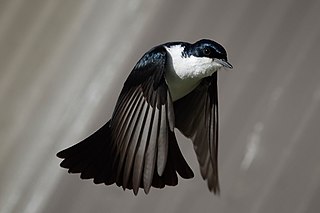
The restless flycatcher or restless myiagra is a passerine bird in the family Monarchidae; it is also known as the razor grinder or scissors grinder because of its distinctive call. It is a native of eastern and southern Australia. Populations in New Guinea and northern Australia, which were at one time considered to be a subspecies, are now accepted as a separate species, the paperbark flycatcher. It is a small to medium-sized bird and has similar colouring to the willie wagtail.
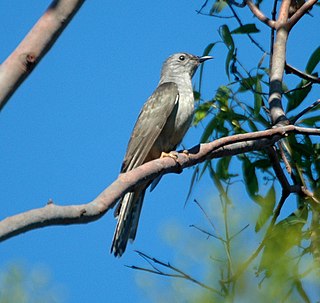
The brush cuckoo is a member of the cuckoo family.

The weebill is a species of bird in the family Acanthizidae. It is an insectivorous passerine that is found throughout mainland Australia. At 8 to 9 cm long, it is Australia's smallest bird. It was originally described by John Gould in 1838, and four subspecies are recognised. The weebill's plumage is nondescript, with olive-grey upperparts and paler, more yellowish underparts. It grades from more brownish plumage in the southern regions of Australia to more yellow in tropical areas.

The splendid fairywren is a passerine bird in the Australasian wren family, Maluridae. It is also known simply as the splendid wren or more colloquially in Western Australia as the blue wren. The splendid fairywren is found across much of the Australian continent from central-western New South Wales and southwestern Queensland over to coastal Western Australia. It inhabits predominantly arid and semi-arid regions. Exhibiting a high degree of sexual dimorphism, the male in breeding plumage is a small, long-tailed bird of predominantly bright blue and black colouration. Non-breeding males, females and juveniles are predominantly grey-brown in colour; this gave the early impression that males were polygamous as all dull-coloured birds were taken for females. It comprises several similar all-blue and black subspecies that were originally considered separate species.

The helmeted honeyeater is a passerine bird in the honeyeater family. It is a distinctive and critically endangered subspecies of the yellow-tufted honeyeater, that exists in the wild only as a tiny relict population in the Australian state of Victoria, in the Yellingbo Nature Conservation Reserve. It is Victoria's only endemic bird, and was adopted as one of the state's official symbols.
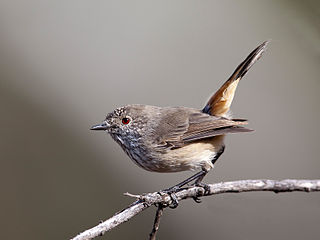
The inland thornbill was originally described by English ornithologist John Gould in The Birds of Australia. Inland thornbills are within the order passerines. The inland thornbill belongs to the genus Acanthiza, which now has three more species than the eleven outlined by Gould in The Birds of Australia. The Noongar people of southwestern Western Australia call A. apicalis "Djoobi-Djoolbang". The inland thornbill is also known as the broad-tail thornbill and presently contains several subspecies that were once considered independent species. The word apicalis comes from the Latin for 'tipped'.

The red-backed fairywren is a species of passerine bird in the Australasian wren family, Maluridae. It is endemic to Australia and can be found near rivers and coastal areas along the northern and eastern coastlines from the Kimberley in the northwest to the Hunter Region in New South Wales. The male adopts a striking breeding plumage, with a black head, upperparts and tail, and a brightly coloured red back and brown wings. The female has brownish upperparts and paler underparts. The male in eclipse plumage and the juvenile resemble the female. Some males remain in non-breeding plumage while breeding. Two subspecies are recognised; the nominate M. m.melanocephalus of eastern Australia has a longer tail and orange back, and the short-tailed M. m. cruentatus from northern Australia has a redder back.

The blue-breasted fairywren, or blue-breasted wren, is a species of passerine bird in the Australasian wren family, Maluridae. It is non-migratory and endemic to southern Western Australia and the Eyre Peninsula in South Australia. Exhibiting a high degree of sexual dimorphism, the male adopts a brilliantly coloured breeding plumage, with a bright blue crown, ear coverts and upper back, red shoulders, contrasting with a dark blue throat, grey-brown tail and wings and pale underparts. Non-breeding males, females and juveniles have predominantly grey-brown plumage. No separate subspecies are recognised.
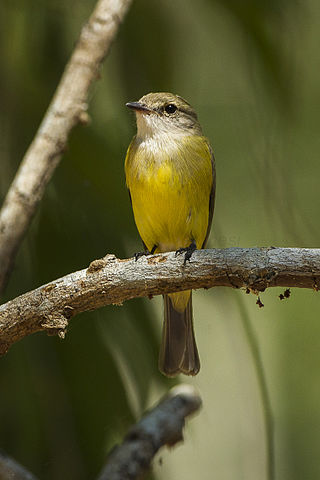
The lemon-bellied flyrobin or lemon-bellied flycatcher is a species of bird in the family Petroicidae. Found in Australia, Indonesia, and Papua New Guinea, its natural habitats are subtropical or tropical moist lowland forests and subtropical or tropical mangrove forests.

Myiagra is a genus of passerine birds in the family Monarchidae, the monarch flycatchers, native to Australasia, sometimes referred to as the broad-billed flycatchers or simply broadbills.

The shining flycatcher is a species of bird in the family Monarchidae. It is found in northern Australia, and from the Moluccas to the Bismarck Archipelago. Its natural habitats are subtropical or tropical moist lowland forest and subtropical or tropical mangrove forest.
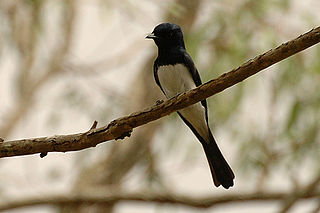
The satin flycatcher is a species of bird in the family Monarchidae. Males stand out with their blue-black feathers contrasting their white bellies, and the females with their bright orange throats. It breeds mostly in south-eastern Tasmania and Australia. It is declining throughout the eastern seaboard due to predation from the introduced Red Fox and habitat loss. It is a vagrant to New Zealand.
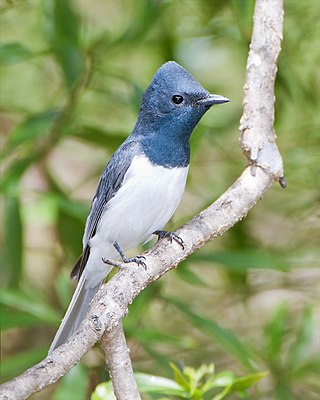
The leaden flycatcher is a species of passerine bird in the family Monarchidae. Around 15 cm (6 in) in length, the male is lustrous azure with white underparts, while the female possesses leaden head, mantle and back and rufous throat and breast. It is found in eastern and northern Australia, Indonesia, and Papua New Guinea. Its natural habitat is subtropical or tropical mangrove forests in the northern parts of its range, in the south and inland it is eucalypt woodland.
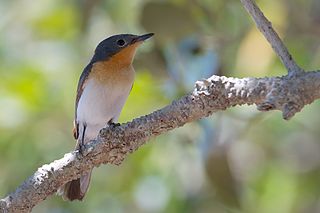
The broad-billed flycatcher is a species of bird in the family Monarchidae. It is found in northern Australia, the Lesser Sunda Islands and southern New Guinea. Its natural habitats are subtropical or tropical moist lowland forest, subtropical or tropical mangrove forest, and subtropical or tropical moist montane forest.

The red-headed myzomela or red-headed honeyeater is a passerine bird of the honeyeater family Meliphagidae found in Australia, Indonesia, and Papua New Guinea. It was described by John Gould in 1840. Two subspecies are recognised, with the nominate race M. e. erythrocephala distributed around the tropical coastline of Australia, and M. e. infuscata in New Guinea. Though widely distributed, the species is not abundant within this range. While the IUCN lists the Australian population of M. e. infuscata as being near threatened, as a whole the widespread range means that its conservation is of least concern.






















